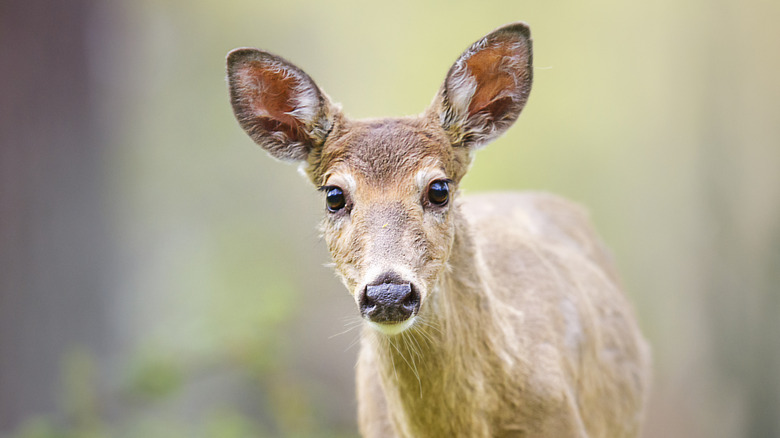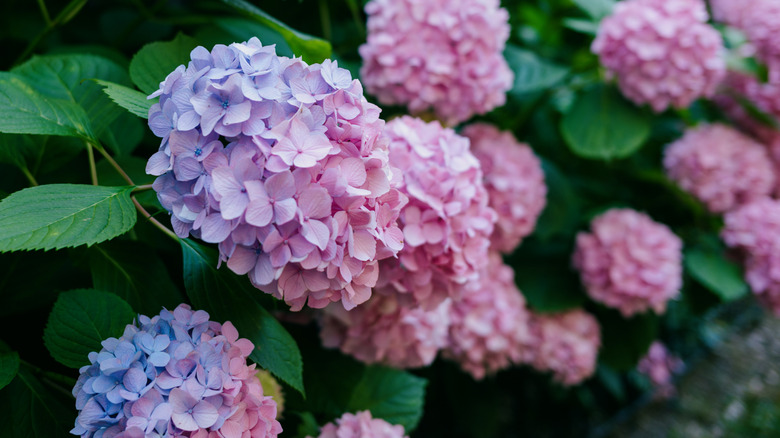Why Do Deer Eat Some Hydrangeas But Not Others?
Like many garden visitors, deer are opportunists. They have preferences when it comes to the types of flowers and foliage they'll sample from your beds and gardens, but they'll also eat their less favorite specimens in a pinch. In general, deer love hydrangeas, especially the flowers. But you might find that certain hydrangeas in your yard grow undeterred without stripped leaves or broken twigs. Others might be chewed down to the roots one season and spared the next. So, how do you know which of your beautiful buds will fall prey to these backyard dinner guests?
The answer starts with the variety of hydrangea, but other factors, such as its location and the availability of other food sources, also play a major role. Experts say there are types of hydrangeas deer don't love and ways you can ensure the plants you do have are less appetizing and harder to reach for these hungry critters. In general, deer prefer munching on a plant's soft petals and fragrant flowers versus on the leaves and stems that are harder to chew. That said, when in bloom, there's also a higher presence of pests that will destroy your hydrangeas. If you have a hydrangea bush that produces beautiful blooms all season without so much as a nibbled leaf, chances are you either have a variety that deer don't like or your plant is being protected by other factors.
Deer love delicate buds but dislike rough foliage
There are at least three stunning types of hydrangeas that deer won't be tempted to eat. Certain hydrangea varieties have rougher foliage than others, which deer don't seem to bother as much. Expert gardeners mostly cite anecdotal experience when pointing to the types of plants deer avoid, including bracketed hydrangeas (Hydrangea involucrata), bigleaf hydrangeas (Hydrangea macrophylla), and mountain hydrangeas (Hydrangea serrata).
Bracketed hydrangeas have velvety petals, a texture that deer dislike, while the bigleaf and mountain varieties have much thicker, almost leather-like leaves that also seem to be off-putting. Additionally, while many hydrangea varieties grow into round shrubs that are low to the ground, climbing hydrangeas (Hydrangea anomala) and false hydrangea vines (Schizophragma hydrangeoides) grow upwards with blooms too high for deer to reach, making them deer-proof by default.
There are two more common hydrangea varieties that are as popular with deer as they are beginner gardeners. So, while they might be hardy, beautiful, and easy to grow, the deer also prefer to feast on them. They are the smooth hydrangea (Hydrangea arborescens) and panicle hydrangea (Hydrangea paniculata). If you find that your hydrangea has trouble growing (let alone blooming) without getting chomped, you could be dealing with one of these more delectable varieties.
The sprays, barriers and deer-resistant plants protecting your hydrangeas
Say you have a smooth hydrangea, which many gardeners claim is among deers' favorites, but it's thriving. Chances are there are other factors at play preventing deer from eating that particular plant in your yard. Some of these factors are out of your control, and some you can influence, like using natural ingredients that can repel deer from your yard and garden.
Hydrangeas typically bloom from late spring to fall, and deer have the hardest time finding food during winter and into early spring. If your hydrangea is blooming during a time when dozens of other plants and flowers are having their heyday, it could be protected by virtue of opportunity and food availability. On the flip side, if it's been a rough growing season in your area, you could find that deer are eating the hydrangeas they otherwise left alone.
For as brave and hungry as deer might be, there are plants they won't dare go near. If your hydrangea is close to your home, deer could be reluctant to approach, knowing humans are nearby. If you have a fenced yard, it could be that your hydrangea is in an area that deer simply have to work harder to reach. Couple that with a dog that occasionally roams, and you could have a deer-proof yard.
Finally, deer have a keen sense of smell, meaning they're easily deterred by aromatic plants they dislike and sprays or repellents designed to keep them at bay. If your hydrangea is surrounded by oregano, marigolds, dahlias, or mint, deer could be avoiding it. Similarly, if you use deer repellant nearby or have a neighbor who likes to spray it or scatter granules, you could be experiencing the sort of protection these methods offer.


